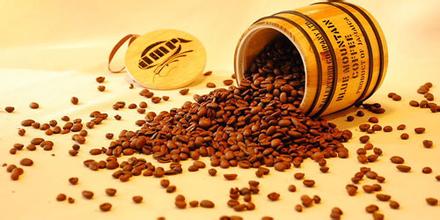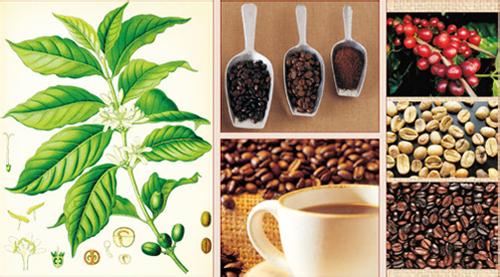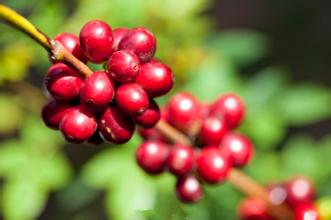Grinding scale of Mantenin Coffee beans in Indonesia introduction to the manor by variety treatment
Sellers often label Lintong Lindong and Mandheling Mandheling coffees as dry processed. In fact, the pulp is often separated from the coffee seeds by a variety of mixing modes, more commonly a backyard wet treatment. Clever farmers put freshly picked coffee cherries into a crude peeling machine assembled from scrap metal, wood and bicycle parts. The peeled, sticky beans are then fermented overnight in plastic woven bags. The next morning, wash off the soft, fermented pulp and stickiness by hand. The silver-coated coffee is pre-dried on a sheet in the front yard and sent to a middleman's warehouse where the silver is removed and further dried. Finally, the coffee is trucked to Medan Port (capital of Sumatra) for the third and final drying. It has also been reported that in other Mandheling regions, after removal of the pericarp, the mucilage is allowed to dry and adhere to the beans, as is done in Brazil with semi-washing. After that, the dried slime and silver skin are removed by machine. The final drying is the same two-stage drying process, first at the middleman's warehouse and then at the exporter's warehouse in Medan.
Process with Sumatra characteristics. I describe these processes in such detail because it is not clear to what extent soil and atmosphere and unusual treatment techniques and three-stage drying each affect the formation of the characteristics of Linton and Mantenin coffee. Only one thing is certain. These treatments occasionally produce excellent coffee but are also extremely unstable. Only relentless picking in the Medan Port exporter's warehouse ensures that the depth of texture and distinctive understated richness of Lintong and Mandheling emerge from the interference of other odors.
During the Japanese occupation of Indonesia in World War II, a Japanese soldier drank excellent coffee in a cafe, so he asked the owner, the name of the coffee, the owner mistakenly asked him where you are from, so he replied: Mandenin. After the war, Japanese soldiers recalled drinking "Mantenin" in Indonesia. So Indonesia asked the passenger to transport 15 tons of coffee to Japan, which was very popular. Thus the name of Mantenin spread, and the coffee merchant was now known as PWN. Known as mandheling, mandheling is found all over lake Toba in northern Sumatra. The finished product has unique fragrance of herbs and trees.
The Japanese adopted stricter quality control more than ten years ago. After four manual bean picking and eliminating defective beans, they produced dark green and uniform gold mantin. This created another wave of market demand, and even Europe and America were crazy about it.
Aged mandheling, sweet as honey. Successful aging of the beans, will be the mantenin not elegant sour wear off. The sour ingredients are ripened and converted to sugar, making the coffee more rounded and sweeter to drink. Failed old mantinin is like a coffee zombie, the taste is hard to eat

Important Notice :
前街咖啡 FrontStreet Coffee has moved to new addredd:
FrontStreet Coffee Address: 315,Donghua East Road,GuangZhou
Tel:020 38364473
- Prev

Panama coffee beans grinding scale varieties production area processing method taste introduction
In the land of Poquet, there was a bean with a particularly high cost performance ratio. And it has a very beautiful name, Flower Butterfly. It has a 40% high-quality rosewood pedigree. It consists of three varieties: rosewood, cadura and caduai. It is planted in the Baru volcanic area of Poquet. It grows in the volcanic area at an altitude of 1600 meters. The treatment plant uses fine washing treatment. Panama's special micro
- Next

Nicaragua coffee beans grinding graduation method Variety production area Manor introduction
Nicaragua is an economically backward agricultural country and one of the poorest countries in Central America. The unemployment rate is very high and the people live in poverty. Coffee is the pillar industry of Nicaragua, producing nearly 100,000 tons of coffee beans every year. Because of the poor economic base, the coffee industry is still relatively backward, and coffee farmers are also in a relatively poor state. Although Nicaragua is a Central American country with a large territory
Related
- Detailed explanation of Jadeite planting Land in Panamanian Jadeite Manor introduction to the grading system of Jadeite competitive bidding, Red bid, Green bid and Rose Summer
- Story of Coffee planting in Brenka region of Costa Rica Stonehenge Manor anaerobic heavy honey treatment of flavor mouth
- What's on the barrel of Blue Mountain Coffee beans?
- Can American coffee also pull flowers? How to use hot American style to pull out a good-looking pattern?
- Can you make a cold extract with coffee beans? What is the right proportion for cold-extracted coffee formula?
- Indonesian PWN Gold Mandrine Coffee Origin Features Flavor How to Chong? Mandolin coffee is American.
- A brief introduction to the flavor characteristics of Brazilian yellow bourbon coffee beans
- What is the effect of different water quality on the flavor of cold-extracted coffee? What kind of water is best for brewing coffee?
- Why do you think of Rose Summer whenever you mention Panamanian coffee?
- Introduction to the characteristics of authentic blue mountain coffee bean producing areas? What is the CIB Coffee Authority in Jamaica?

